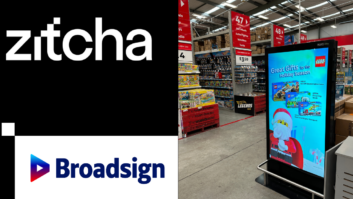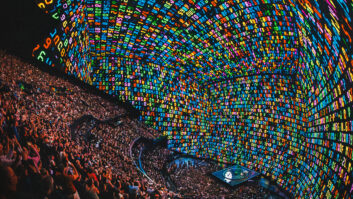 Across every industry, the themes of digital transformation and sustainability have remained a key focus in 2022, increasingly becoming an important differentiator for customers. With the pandemic progressing some companies’ digital transformation journeys by up to seven years it has become clear that this is integral to how we now live our lives and interact with the products and services around us. Last year’s COP26 event and net zero announcements for the UK have brought sustainability to the fore, becoming a core pillar to enterprise goals.
Across every industry, the themes of digital transformation and sustainability have remained a key focus in 2022, increasingly becoming an important differentiator for customers. With the pandemic progressing some companies’ digital transformation journeys by up to seven years it has become clear that this is integral to how we now live our lives and interact with the products and services around us. Last year’s COP26 event and net zero announcements for the UK have brought sustainability to the fore, becoming a core pillar to enterprise goals.
The global signage market is no stranger to any of the above. Not only does the industry aim to become greener itself, the nature of the industry to communicate with customers means that it is key for all businesses to progress their company goals and objectives. It is on the AV industry to address how it can progress innovation to support its users; firstly, ensuring its own products are supporting sustainability with green signage, and also supporting industries such as retail in moving forwards in the digital age.
GREEN CREDENTIALS
There is an increasing need for companies to substantiate their green credentials, with mounting pressure from the government to meet climate goals. Many companies have made green pledges, achieving net zero within the next ten years and making their whole business more sustainable – from the supply chain and transport to the products themselves and packaging.
With displays integral to how businesses operate, digital signage vendors are looking to make powering screens more energy efficient in addition to focusing on green packaging.
AV equipment is already required to conform to energy related products (ERP) regulations on energy consumption and power, however the industry has a collective responsibility to minimise the environmental impact of its products – and a few small changes could make all the difference.
Pro AV tech is often needed to stay on for long periods of time, displaying information to users in areas of ambient lighting such as airports. When looking at outside lighting conditions and consumer use, however, this is not always completely necessary. By installing sensors that measure outside lighting conditions the screens can adjust display brightness, something which can also apply to the screen’s environment. Dimming the screen when it is not in an area of brightness contributes to a much more energy efficient performance.
A further energy saving measure would be installing proximity sensors so that the screens were only on when there is a need to convey the information to a nearby individual. These measures reduce the amount of power consumed by displays, without affecting their performance and therefore lowering the environmental impact.
PLASTIC NEGATIVITY
The negative effect plastic has on the environment has been long understood, yet replacements that perform to the same level can still be difficult to find. Recently we have understandably seen more interest from both businesses we work with and those that use our products in sustainable cardboard packaging to replace traditional expanded polystyrene (EPS). The replacement of EPS with sustainable cardboard packaging is a very viable option which we believe can and must be made for green packaging options in 2022.
As shoppers return to the high street, a more digitised experience will await them. Retail has long been talked about as in need of innovation, with an omnichannel approach to the customer experience. The pandemic brought with it a need for consumer safety to be at the forefront of any changes, but to provide a truly revolutionary retail experience business owners must go further than simply responding to social distancing guidelines. With consumers increasingly familiar with an online, digital experience, retailers need to consider how they can take their brick-and-mortar shops into the digital age, creating a more technology-focused experience of consumption in store.
Software, hardware, and audio will form a perfect trio to immerse consumers in the products that surround them and make their shopping experience truly unique. 2022 will be the year retailers start to gain a competitive edge through these digital experiences.
A huge draw of the online customer experience is a personalised approach. Customers can be recommended products based on what they’ve previously searched or looked at. For retailers, the challenge is how to replicate this experience in store with experiential and interactive retail offerings.
Retailers can gain a competitive edge here using tools such as trigger-based content, with digital signage changing based on different products that customers get close to and pick up. As the customer looks at the product, messaging and information is displayed on the screen, reverting back to standard programmed messaging once the product is put back.
RETAIL TRANSFORMATION
The retail sector has changed forever, redefining what makes a good shopping experience. Where consumers previously prioritised comfort in shopping, safety has now topped the list of considerations. Retailers have the added responsibility of keeping their consumers safe while in-store, alongside maintaining an exceptional customer experience. Stores have employed digital signage to remind customers about the ever-changing regulations and to signpost the direction of traffic to ensure people follow a safe one-way system. As regulations ease and consumers shop with a level of personal responsibility, displays can provide store numbers in the shop windows so shoppers can make informed decisions on whether to enter. Moving forwards the installation of in-store sensors that communicate directly with digital screens will enable greater accuracy of footfall reporting, allowing shoppers to make even more informed decisions based on real-time information.
In 2022, the next step for businesses to push the capabilities of Digital Out of Home (DOOH) marketing will be to further personalise the in-store experience with targeted advertising. Audience measurement and demographic analytics will enable retailers to direct messaging at whoever is looking at the screen. Mimicking online advertising, DOOH will personalise content, directing consumers to products they may not have purchased otherwise. With convenience as one of the main influencers of customer decisions, this real-time information could make the difference between a sale or no sale. This will also further merge the experiences of in-store and online shopping, creating a seamless customer journey and allowing retailers to create an engaging interactive experience and revive in-store shopping.







